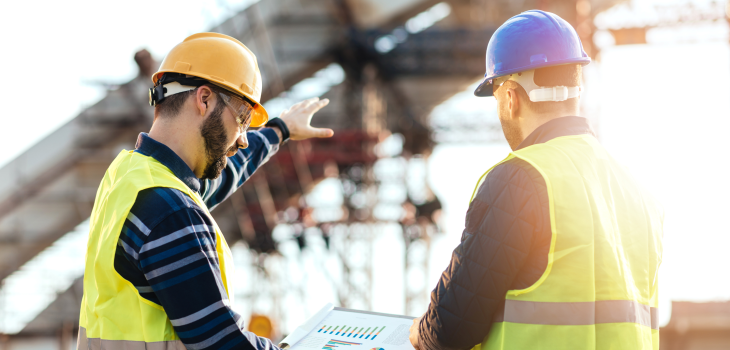 Construction
Construction
The Benefits of Adaptive Reuse in Construction
Adaptive reuse is transforming the construction industry. Whether you’re a construction company owner exploring sustainable opportunities or simply interested in maximizing value in projects, adaptive reuse offers exciting possibilities. By reimagining existing structures, this innovative approach breathes new life into buildings, reduces environmental impact, and maximizes financial returns.
In this blog, we’ll unpack what adaptive reuse is all about, highlight its key benefits, and explore how your construction company can capitalize on this growing trend.
What is Adaptive Reuse in Construction?
Adaptive reuse involves repurposing old or unused buildings for new purposes rather than tearing them down and starting from scratch. Think of converting an abandoned factory into loft apartments or turning an unused church into a modern office space.
This process is not just about preserving history; it’s about blending creativity, efficiency, and sustainability into construction projects. It’s a trend growing in popularity as many industries and developers prioritize environmental impact and unique architectural solutions.
Why Adaptive Reuse is Gaining Momentum
Adaptive reuse aligns with critical changes in urban planning and environmental consciousness. Cities worldwide are running low on undeveloped land, and the high cost of new construction materials makes adaptive reuse an economical alternative. Couple these factors with a growing demand for sustainability, and it’s clear why this practice has gained momentum in the construction industry.
Now, let’s dig deeper into its primary benefits.
Key Benefits of Adaptive Reuse
1. Environmental Sustainability
Construction is one of the largest contributors to global carbon emissions, with new builds requiring large amounts of raw materials and energy. Adaptive reuse minimizes this footprint by using existing structures.
How It Helps:
- Reduces the need for raw materials like cement and steel.
- Decreases landfill waste by repurposing existing materials.
- Requires less energy compared to demolishing and rebuilding structures, contributing to lower CO2 emissions.
Example: The High Line in New York City is a classic case of adaptive reuse. Once an abandoned rail line, it has been turned into an urban park, preserving materials while reducing waste.
2. Cost Efficiency
Adaptive reuse often costs less than demolishing and rebuilding. While the upfront work of assessing and reinforcing older structures must be factored in, many construction companies find the overall project expenses are significantly reduced.
How It Helps:
- Avoids demolition costs.
- Saves on the rising cost of new construction materials.
- Attracts developers and investors keen to capitalize on the lower building costs associated with reuse projects.
Pro Tip for Construction Owners: By specializing in adaptive reuse, your company can offer cost-effective alternatives to developers, marketing it as a win-win for budgets and sustainability goals.
3. Preservation of Architectural Heritage
Many older buildings feature intricate designs and architectural elements that are nearly impossible to reproduce under today’s budget or time constraints. Adaptive reuse allows for the preservation of these unique characteristics, blending the past with the future.
How It Helps:
- Preserves cultural and architectural history, adding value to properties.
- Creates standout, visually striking projects that appeal to clients and communities.
Example: The Tate Modern in London was once a power station. Its reuse preserved the industrial essence of the building, turning it into a world-renowned museum.
4. Faster Project Timelines
Time is money in construction. Adaptive reuse projects can often shorten timelines by avoiding permitting delays associated with new builds or large-scale demolitions.
How It Helps:
- Minimizes groundwork and foundational work.
- Speeds up the approval processes for utilizing existing infrastructure.
- Leads to earlier project delivery, improving profit margins.
5. Market Appeal and Community Support
Adaptive reuse projects often carry strong emotional or cultural significance for local communities. Reusing old spaces creates buildings that people resonate with and appreciate.
How It Helps:
- Attracts end-users seeking character and authenticity.
- Aligns with public demand for sustainability, boosting brand perception.
- Gains positive press coverage, making your construction company stand out as an innovative leader.
Market Insight: Modern buyers—millennials, in particular—are increasingly drawn to properties with unique character and sustainability credentials.
6. Tax Incentives and Financial Benefits
Governments and municipalities are now incentivizing adaptive reuse projects through tax credits and grants. By investing in these projects, construction companies can take advantage of financial perks that wouldn’t apply to new developments.
How It Helps:
- Historic restoration tax credits are available for preserving structures.
- Incentives reduce project costs while boosting ROI.
Tip: Speak to local agencies to uncover specific programs available in your project’s location.
How to Incorporate Adaptive Reuse into Your Business
For construction company owners, integrating adaptive reuse requires strategic adjustments. Here are some steps to help you get started:
1. Build Expertise in Assessment
Train your team to evaluate old buildings for structural integrity, materials, and potential for reuse. Partnering with architects skilled in historic preservation can add value to this process.
2. Showcase Success Stories
Highlight your proven track record in adaptive reuse. Creating case studies or promotional materials for successful projects can position your company as an industry leader.
3. Collaborate with Developers and Investors
Build relationships with developers eager to explore cost-effective and eco-friendly projects. Present yourself as a go-to partner for adaptive reuse.
4. Stay Ahead of Legal Requirements
Ensure your team understands local zoning laws, tax incentives, and preservation regulations. Adapting early to these legal landscapes can streamline project approval.
5. Market the Environmental Edge
Leverage the rising demand for green projects by making sustainability a core part of your brand messaging. Developers increasingly seek partners who align with eco-conscious values.
Adaptive Reuse is the Future of Construction
Adaptive reuse in construction is not just a passing trend – it’s a monumental shift that aligns with modern business practices and environmental needs. For construction company owners, it’s an opportunity to diversify, meet market demand, and increase profitability.
When done right, adaptive reuse can transform challenges into opportunities, turning the structures of yesterday into thriving spaces for tomorrow.
If your team is ready to embrace adaptive reuse, don’t wait. Start building your expertise, connect with developers, and position your company as a leader in this dynamic field.



